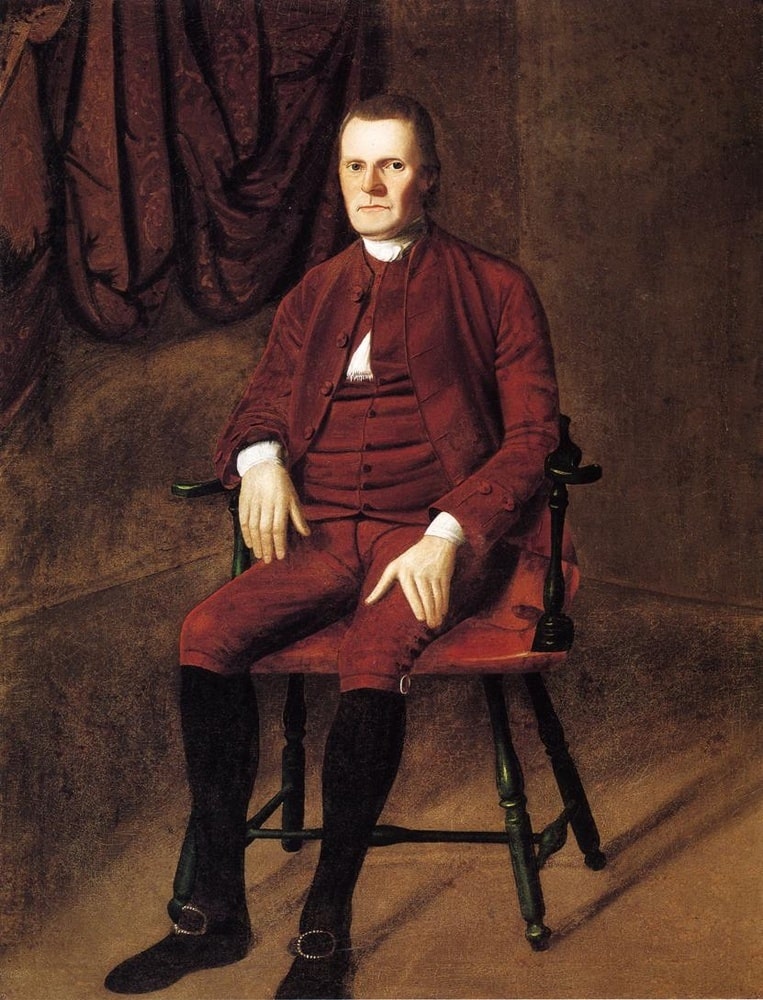Contents

Contents
Quick facts
- Born: 19 April 1721 in Newton, Massachusetts.
- Roger Sherman was a founding father of the United States, known for his significant contributions as a politician and lawyer.
- He was the only person to sign all four great state papers of the United States: the Continental Association, the Declaration of Independence, the Articles of Confederation, and the Constitution.
- Sherman played a key role in the drafting of the Constitution of the United States and is credited with proposing the bicameral structure of Congress.
- He represented Connecticut in both the Continental Congress and the U.S. Congress after the nation’s founding.
- Sherman is also remembered for his work on the Committee of Five, which drafted the Declaration of Independence.
- His legal and political career was marked by a firm belief in the rule of law and a commitment to public service.
- Sherman’s influence extended to the judicial realm, where he served on the Supreme Court of Connecticut before the establishment of the federal judiciary.
- Died: 23 July 1793 in New Haven, Connecticut.
Biography
Roger Sherman, American political leader and signer of the Declaration of Independence, was born at Newton, Massachusetts, in 1721. He moved with his parents to Stoughton in 1723, attended the country school there, and at an early age learned the cobbler’s trade in his father’s shop. Removing to New Milford, Connecticut, in 1743, he worked as county surveyor, engaged in mercantile pursuits, studied law, and in 1754 was admitted to the bar. He represented New Milford in the Connecticut Assembly in 1755 – 56 and again in 1758 – 61.
From 1761 until his death New Haven was his home. He was once more a member of the Connecticut Assembly in 1764 – 66, was one of the governor’s assistants in 1766 – 85, a judge of the Connecticut superior court in 1766 – 89, treasurer of Yale College in 1765 – 76, a delegate to the First and Second Continental Congress in 1774 – 81, a delegate to the Congress of the Confederation in 1783 – 84, a member of the Connecticut Committee of Safety in 1777 – 79 and in 1782, mayor of New Haven in 1784 – 93, a delegate to the Federal Constitutional Convention of 1787 and to the Connecticut Ratification Convention of the same year, and a member of the U.S. House of Representatives in 1789 – 91 and of the Senate in 1791 – 93.
He was on the committee which drafted the Declaration of Independence (along with Thomas Jefferson, John Adams, Benjamin Franklin, and Robert Livingston), and also on that which drafted the Articles of Confederation. His greatest public service, however, was performed at the Constitutional Convention. In the bitter conflict between the large state party and the small state party he and his colleagues, Oliver Ellsworth and William Samuel Johnson, acted as peacemakers. Their share in bringing about the final settlement, which provided for equal representation in one house and proportional representation in the other, was so important that the settlement itself has come to be called the Connecticut Compromise.
He helped to defeat the proposal to give Congress a veto on state legislation, showing that it was illogical to confer such a power, since the constitution itself is the law of the land and no state act contravening it is legal.
In the U.S. Congress (1789 – 93) he favored the assumption of the state debts, the establishment of a national bank, and the adoption of a protective tariff policy. Although strongly opposed to slavery, he refused to support the Parker resolution of 1789 — providing for a duty of ten dollars per head on Negroes brought from Africa — on the ground that it emphasized the property element in slavery.
He died in New Haven on the in 1793. Sherman was not a deep and original thinker, nor was he a brilliant leader, but owing to his conservative temperament, his sound judgment, and his wide experience, he was unequaled in leading the compromise cause in the convention of 1787.

